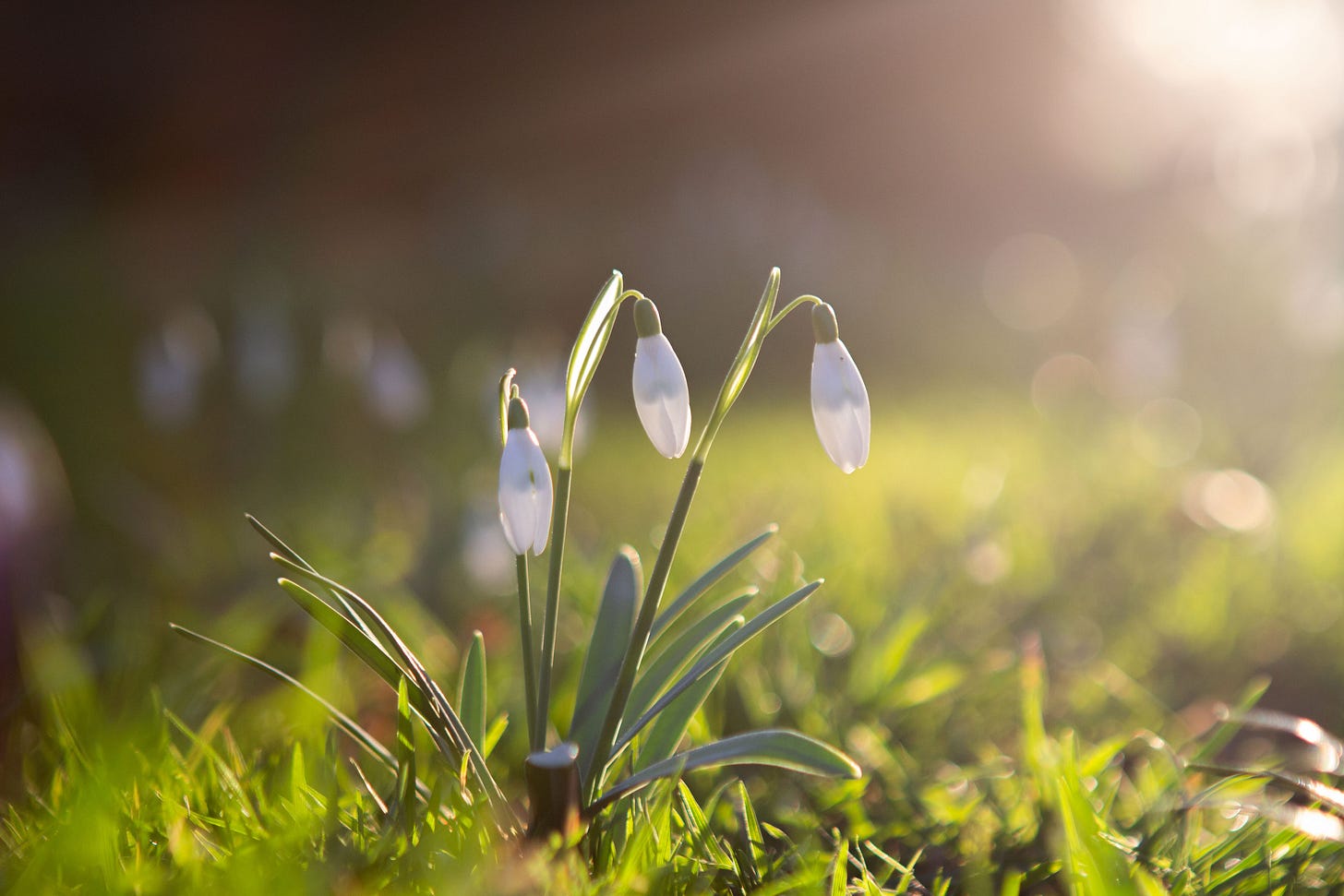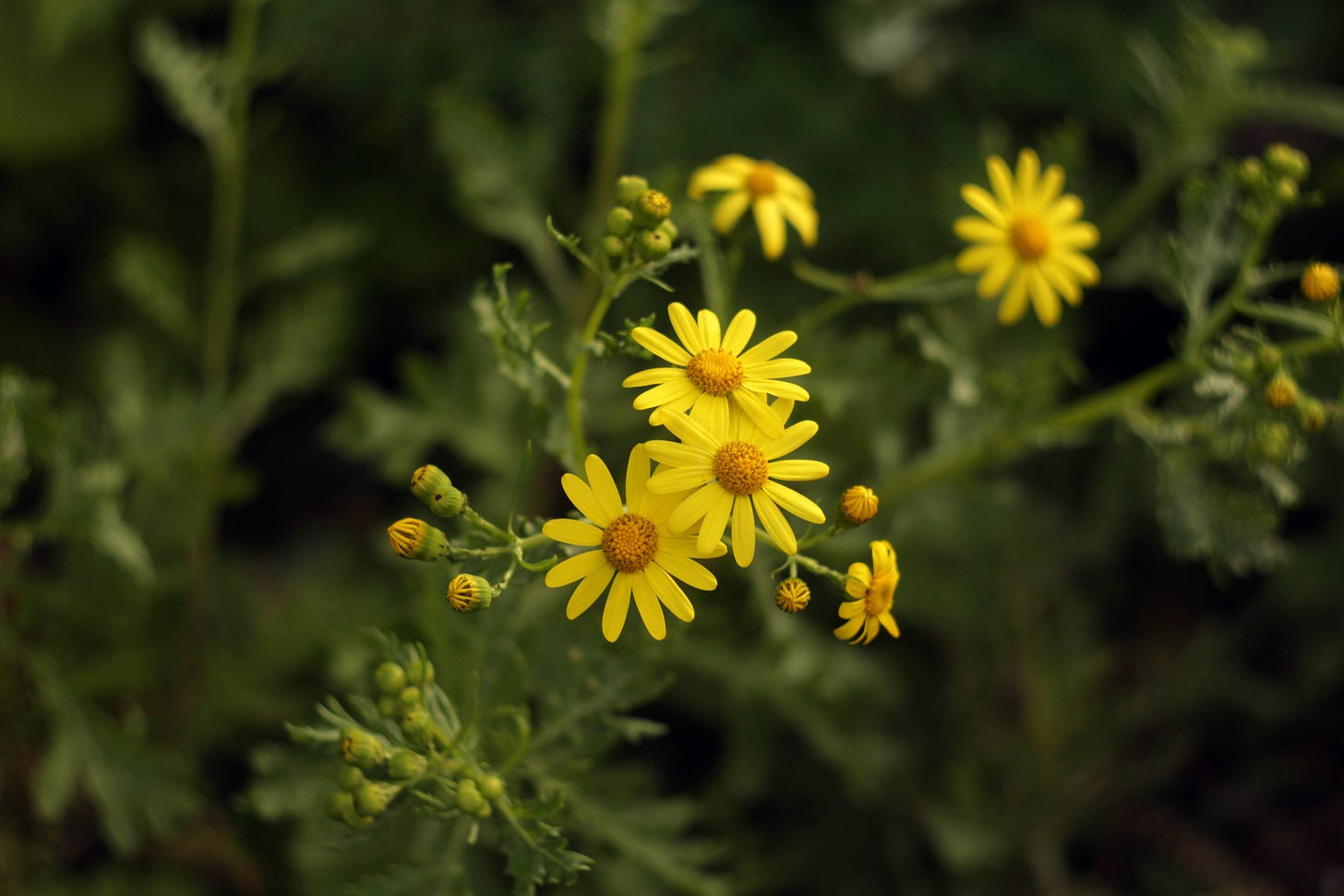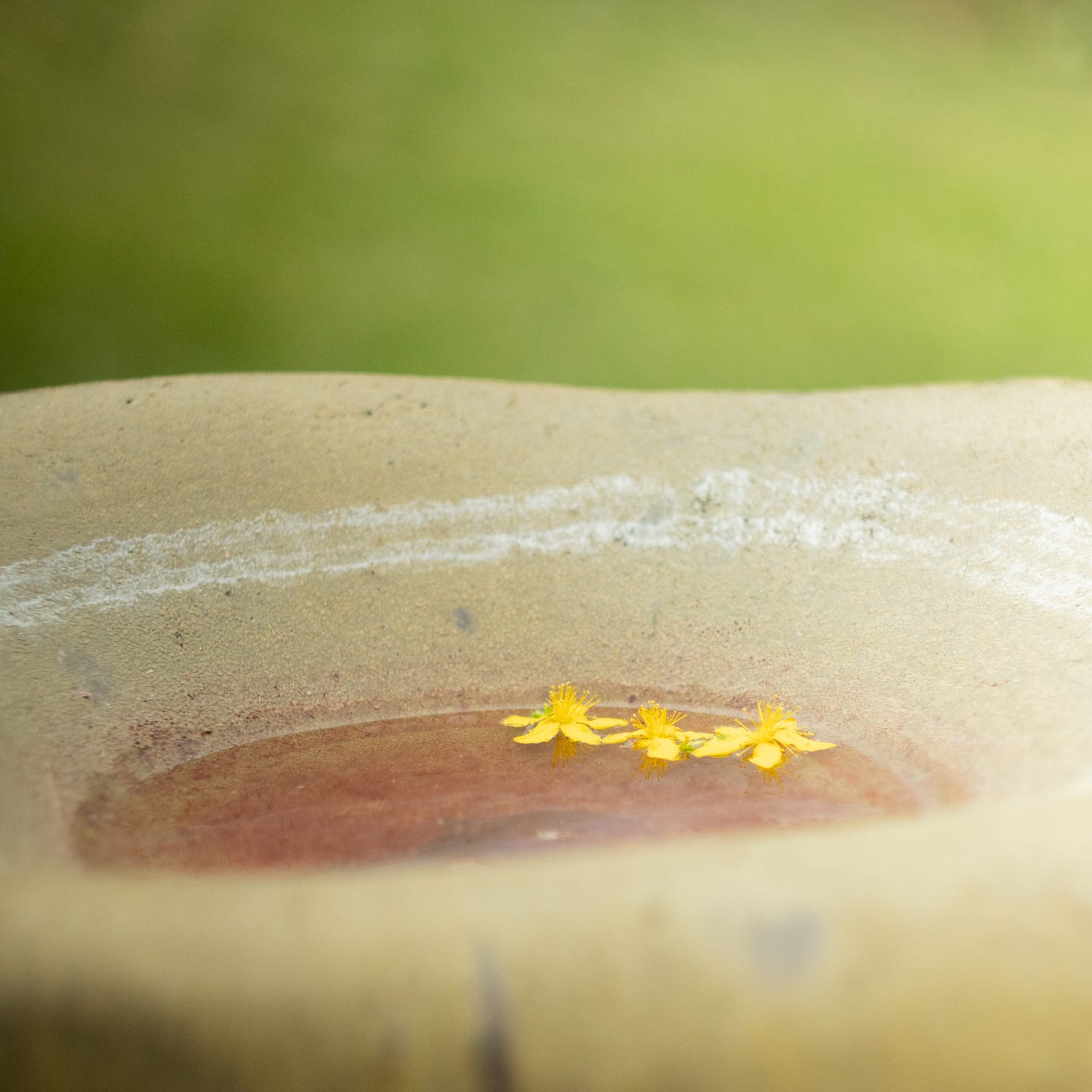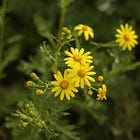How to reconnect with the changing seasons.
Trees are laden heavy with autumn fruit. Leaves dark and faded, spent, exhausted from weeks of a fierce summer that began long before the equinox.
Our seasons have been long tied to our calendar as a way of measuring how we work, how we live. Our ancestors rose with the sun, worked with the changing of the seasons, sowing and reaping in harmony with the Earth’s transit around the sun. The harvests weren’t always guaranteed: some drier than others, some wetter than others, but for the most part a stable climate created stable agriculture. This stability is what allowed hunter-gatherers to settle, paving the way for complex civilisation.
Take that stability away, and things begin to get shaky.
With a global food supply chain and industrial supermarket economy, you and I no longer have to rely on the seasons for our food. We can buy fruit whenever we it, not just in the month of harvest. Kiwis and satsumas and bananas, flown or shipped from warmer countries, are such familiar sights on our shelves every single day that it’s impossible to imagine a world without them.
It’s the same with our living and working spaces. With carefully air conditioned or heated offices, homes and vehicles, we have mastered the science of ‘room temperature’. Winter or summer, our spaces are homogenous, our thermostats are smart, and as the years have passed our lives have become utterly frictionless. My dad used to tell stories of the water in the toilet bowl turning to ice in the winter. Today I can tune my heating to within a fraction of a degree using my phone when I’m halfway across the world.
This might sound like a utopia, but there’s something innate that we’ve lost along the way. A kind of mammalian attachment to the orbit of the planet and the stars, an affiliation with the subtle shifting of the living world that indicates where we are on our cosmic journey.
Seasons should reflect not just the natural world but how we act within it.
Take winter. A time of dormancy, of rest and recuperation, of sleep while we wait for the green shoots of spring. A time to live on the reserves harvested from the summer’s bounty.
Yet for many, winter - with its Christmas shopping bonanzas and holiday sales - is the most stressful time of year. It has been commodified to the extent that for many businesses it is boom or bust.
If you work a nine to five office job you’re expected to show up and perform to the same standard day in, day out, every single week of the year. The next year your performance is measured against your targets and your targets increase. Your performance is expected to do the same. You become trapped in an endless pursuit of something you can never hope to complete. There are no cycles, there is no ebb and flow, there is just permanent work. For decades.
It’s no wonder we’re all losing our minds.
With detachment from the seasons comes a detachment from the living world itself. As our climate continues to heat up with the burning of oil and gas, the seasons themselves are beginning to fracture. Plants and trees that depend on the gradual use of energy throughout the summer are being exhausted by heatwaves before summer has even begun. Warm winters are confusing insects, throwing pollination patterns out of sync.
Here in Britain we could reliably depend on a fresh, sunny and damp spring to ease into a pleasant summer. This would give way to a crisp autumn, and with the falling of the leaves would come a cold, frosty winter. This year, rainfall has been pitiful. Climate deniers will ignorantly shout that ‘it’s just summer, it’s always hot’ even as record-breaking wildfires sweep our heaths and our farmland and the rivers and reservoirs run dry. In July 2022, when temperatures reached 40 degrees Celsius for the first time ever in the UK, the trees shed their leaves from sheer stress.
In the coming years, these kinds of events will become normal, and we’ll bear witness to catastrophe on a scale we haven’t seen before. In the same way that I’ve never had to break the ice in the toilet, my children will never see a summer that isn’t thick with wildfire smoke.
A couple of weeks ago, I took a visit to a little gem of a garden in London.
OmVed Gardens is a learning centre, exhibition space, and sustainable garden that explores climate resilient ways of growing the food of the future.
I went to check out the exhibition of the garden’s artist-in-residence Vivienne Schadinsky, who was combining research into beans (a very sustainable and resilient food that effectively recycles nutrients back into the soil) with the ancient Japanese art of sumi-e painting.
It was there I discovered that as well as the broad strokes of summer, autumn, winter and spring, there is a traditional Japanese observation of kō - 72 microseasons, each lasting roughly five days, that mark the smallest and most subtle of changing patterns.
I love these. They show a deep understanding of the land and the air and the water and the way it changes over the year. They suggest an innate intertwining of our lives with that of the living world - by marking the dates of the human calendars with specific events in nature.
When summer is associated with holidays, winter with shopping sprees, and spring with the financial year, capitalism has taken complete control of the seasons. How much more in tune with our planet would we be if we measured the year by the emergence of insects, the singing of birds, and the blossoming of fruit trees instead?
Perhaps we’d be more in sync with the world around us, with the perils that face it, and take more urgent action to preserve the stability on which our civilisation depends.
You can explore the exhibition at OmVed Gardens here.
The Japanese 72 microseasons are:
BEGINNING OF SPRING
East wind melts the ice (Feb 4th - 8th)
Bush warblers start singing in the mountains (Feb 9th - 13th)
Fish emerge from the ice (Feb 14th - 18th)
RAINWATER
Rain moistens the soil (Feb 19th - 23rd)
Mist starts to linger (Feb 24th - 28th)
Grass sprouts, trees bud (March 1st - 5th)
INSECTS AWAKEN
Hibernating insects surface (March 6th - 10th)
First peach blossoms (March 11th - 15th)
Caterpillars become butterflies (March 16th - 20th)
SPRING EQUINOX
Sparrows start to nest (March 21st - 25th)
First cherry blossoms (March 26th - 30th)
Distant thunder (March 31st - April 4th)
PURE & CLEAR
Swallows return (April 5th - 9th)
Wild geese fly north (April 10th - 14th)
First rainbows (April 15th - 19th)
GRAIN RAINS
First reeds sprout (April 20th - 24th)
Last frost, rice seedlings grow (April 25th - 29th)
Peonies bloom (April 30th - May 4th)
BEGINNING OF SUMMER
Frogs start singing (May 5th - 9th)
Worms surface (May 10th - 14th)
Bamboo shoots sprout (May 15th - 20th)
LESSER RIPENING
Silkworms start feasting on mulberry leaves (May 21st -25th)
Safflowers bloom (May 26th - 30th)
Wheat ripens and is harvested (May 31st - June 5th)
GRAIN BEARDS & SEEDS
Praying mantises hatch (June 6th - 10th)
Rotten grass becomes fireflies (June 11th - 15th)
Plums turn yellow (June 16th - 20th)
SUMMER SOLSTICE
Self-heal withers (June 21st - 26th)
Irises bloom (June 27th - July 1st)
Crow-dipper sprouts (July 2nd - 6th)
LESSER HEAT
Warm winds blow (July 7th - 11th)
First lotus blossoms (July 12th - 16th)
Hawks learn to fly (July 17th - 22nd)
GREATER HEAT
Paulownia trees produce seeds (July 23rd - 28th)
Earth is damp, air is humid (July 29th - August 2nd)
Great rains sometimes fall (August 3rd - 7th)
BEGINNING OF AUTUMN
Cool winds blow (August 8th - 12th)
Evening cicadas sing (August 13th - 17th)
Thick fog descends (August 18th - 22nd)
MANAGEABLE HEAT
Cotton flowers bloom (August 23rd - 27th)
Heat starts to die down (August 28th - September 1st)
Rice ripens (September 2nd - 7th)
WHITE DEW
Dew glistens white on grass (September 8th - 12th)
Wagtails sing (September 13th - 17th)
Swallows leave (September 18th - 22nd)
AUTUMN EQUINOX
Thunder ceases (September 23rd - 27th)
Insects hole up underground (September 28th - October 2nd)
Farmers drain fields (October 3rd - 7th)
COLD DEW
Wild geese return (October 8th - 12th)
Chrysanthemums bloom (October 13th - 17th)
Crickets chirp around the door (October 18th - 22nd)
FROST FALLS
First frost (October 23rd - 27th)
Light rains sometimes fall (October 28th - November 1st)
Maple leaves and ivy turn yellow (November 2nd - 6th)
BEGINNING OF WINTER
Camelias bloom (November 7th - 11th)
Land starts to freeze (November 12th - 16th)
Daffodils bloom (November 17th - 21st)
LESSER SNOW
Rainbows hide (November 22nd - 26th)
North wind blows the leaves from the trees (November 27th - December 1st)
Tachibana citrus tree leaves start to turn yellow (December 2nd - 6th)
GREATER SNOW
Cold sets in, winter begins (December 7th - 11th)
Bears start hibernating in their dens (December 12th - 16th)
Salmons gather and swim upstream (December 17th - 21st)
WINTER SOLSTICE
Self-heal sprouts (December 22nd - 26th)
Deer shed antlers (December 27th - 31st)
Wheat sprouts under snow (January 1st - 4th)
LESSER COLD
Parsley flourishes (January 5th - 9th)
Springs thaw (January 10th - 14th)
Pheasants start to call (January 15th - 19th)
GREATER COLD
Butterburs bud (January 20th - 24th)
Ice thickens on streams (January 25th - 29th)
Hens start to lay eggs (January 30th - February 3rd)
You might also be interested in:









You might enjoy ‘Light Rains Sometimes Fall’ by Lev Parikian: levparikian@substack.com
THIS!!!!
"When summer is associated with holidays, winter with shopping sprees, and spring with the financial year, capitalism has taken complete control of the seasons. How much more in tune with our planet would we be if we measured the year by the emergence of insects, the singing of birds, and the blossoming of fruit trees instead?"